“When asked what I wanted to be when I grew up, my answer was always, ‘A mom.’ I knew from a very young age that what I wanted more than anything was to have a family of my own. However, when I came out as a lesbian at 18, I struggled to see how I would be able to achieve that dream. Growing up, I always imagined my life with a husband and children from that husband – most likely because that’s the only portrayal of a family I’d been shown all my life – but I really wasn’t sure what life would look like now that I knew I wouldn’t end up marrying a man.
Shortly after I came out, I met my now wife. Even though I knew very early into our relationship she was the woman I wanted to spend my life with, I still had lingering questions about what our future family would look like. I didn’t know any lesbian families, and I didn’t see many in movies or on television I knew it was possible for us to have a family, I just didn’t know how.
Fast forward seven years and my wife, Maeghan, and I have been happily married three years and have decided we’re ready to expand our family. Yet, we are still unsure about where to even begin. After sifting through any information we could find online, plus from the information shared with us by other two-mom families, we finally felt like we understood our options. And more than that, we finally felt like we had a clear picture of how we would build our family.
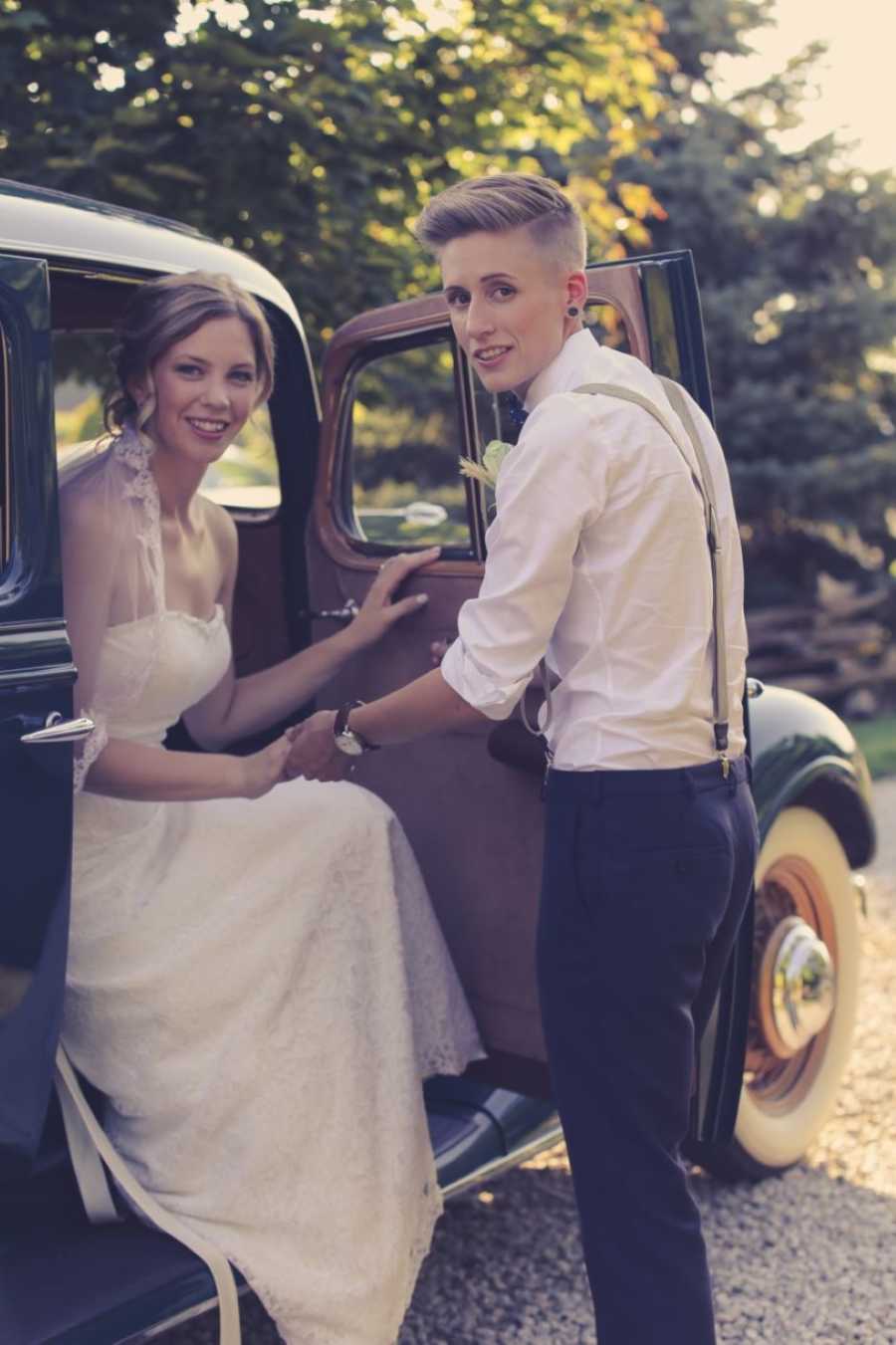
Once we understood our options, we knew right away the best route for us was to enlist the help of a fertility doctor and use anonymous donor sperm to conceive our children. In March of 2018, we anxiously arrived at the fertility clinic for our first appointment. After a few more appointments and a series of tests to check my fertility, we were given the green light to begin ‘trying’ to make our baby. To say we were excited is an understatement. Despite knowing the odds, I was convinced that since I had no fertility issues, we would be among the lucky ones who successfully conceived their first month. We weren’t, and I was devastated, but I did my best to remain positive and geared up for take two.
Take two resulted in another negative and another heartbreak. At the suggestion of our doctor, we decided it was time to use the help of fertility drugs to better our odds. As we prepared the weeks leading up to our third try, I was extremely optimistic; I was certain that with the help of the fertility drugs, this would be our month. I was wrong, and try number three resulted in another negative. Both my mind and my body were exhausted, so we decided it was time to take a break.
After two months of recharging, we met with our doctor to come up with a new plan. Our doctor recommended increasing the medication, but wanted to ensure we understood that this also meant increased odds of conceiving multiples. We understood; however, the sadness we still felt from the three failed attempts made it difficult to imagine successfully conceiving one baby, let alone multiple. Ten days after our fourth try, I decided to take an at-home pregnancy test. I placed the test on the bathroom counter while I washed my hands, and not even two minutes later I was staring at two bright lines. I was pregnant. Finally.
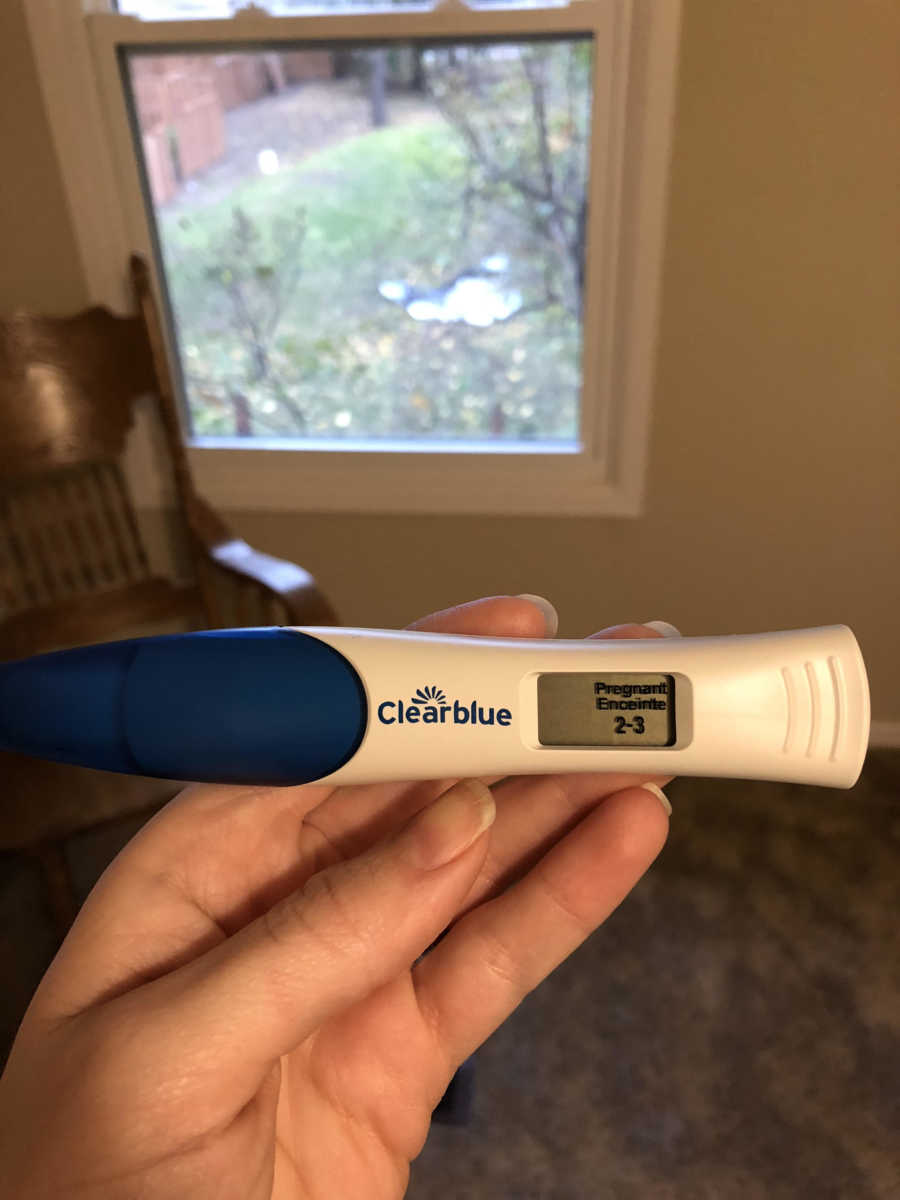
The next few days, before our at-home results were confirmed by our doctor, were a blur. It’s a weird and overwhelming feeling going from being so sad and heartbroken to so elated yet terrified. Our doctor confirmed we were pregnant and scheduled us in for an ultrasound in a few weeks’ time. We spent those few weeks allowing ourselves to get excited, and we began dreaming about what our tiny little baby would be like, and what our life would look like as a family of three. Despite the doctor’s cautioning about the increased odds of conceiving multiples, we never gave much thought to the possibility that there was more than one baby to be dreaming about.
We showed up to our ultrasound excited to see our little miracle for the first time. I lay on the table and looked up at the ceiling as the ultrasound technician maneuvered the wand around my belly. She was silent for what felt like an eternity, moving the wand from side to side and turning the screen further away from us. A knock on the door broke the silence and our technician was called to help in another room. As soon as the door was closed, I shot up from the table to examine the screen myself. ‘OH MY GOD IT’S TWO!’ I screamed just seconds after seeing the images on the screen. Most likely just trying to get me to quiet down, Maeghan responded with, ‘You don’t know that, you’re not a doctor!’ When the technician returned, she finally turned the screen towards us and said, ‘Here is your baby,’ as she pointed at a single little jellybean dancing on the screen. Maeghan quickly responded (with potentially too much enthusiasm), ‘So there’s only one?!’ The technician replied, ‘…And here is your other baby,’ as she moved the wand to reveal a second dancing jellybean labeled ‘Baby B.’
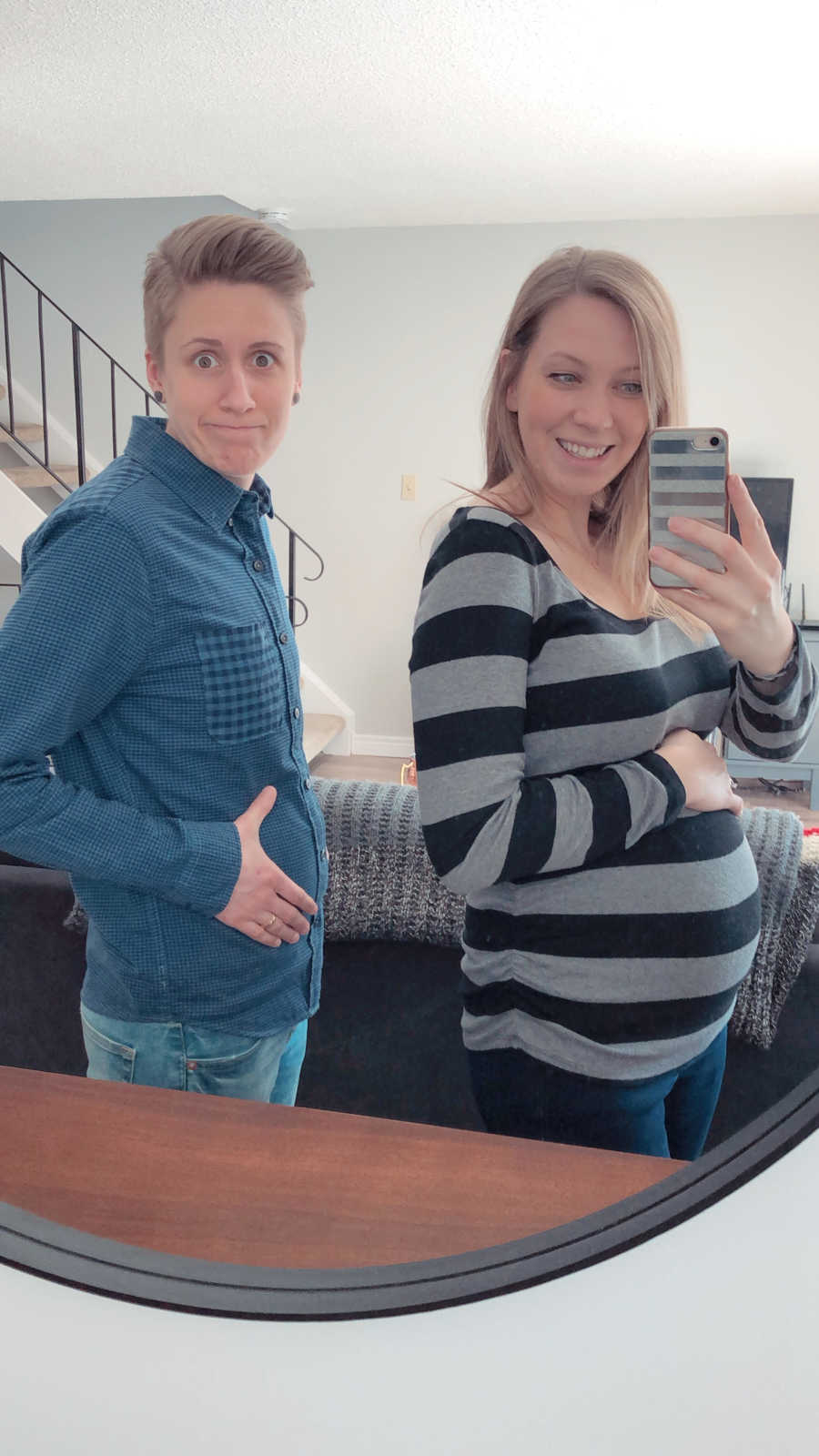
It took Maeghan and I nearly the remainder of my first trimester to process the news that we would be welcoming two babies instead of the one we had planned for. During that time, I think we felt every single emotion imaginable. At first, we mostly felt overwhelmed, terrified, and nervous. I was scared my body wouldn’t be capable of carrying two babies, and I was mourning the loss of the life I had so carefully dreamed of with one baby. But as time went on those feelings shifted into excitement, joy, and thankfulness.
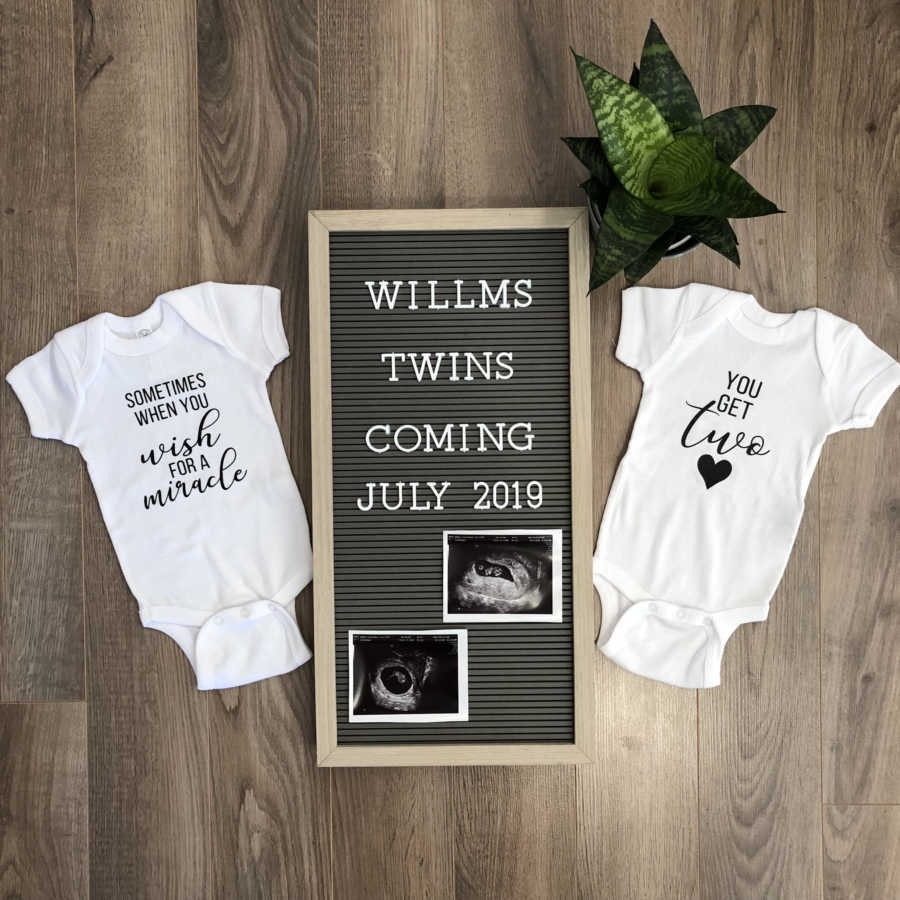
Fortunately, my pregnancy was uneventful, until I reached my maximum pain tolerance at 36.5 weeks and our medical team decided it was time for the babies to come out. After a couple hours of pushing, the doctor said those magical words, ‘With this push, your baby will be here!’ I knew it was close to midnight, but I didn’t know how close so I yelled out to ask what time it was. 11:57 p.m. was the response, to which I cried out, ‘NO! I don’t want them to have different birthdays!’ There was some laughter in the room as our doctor informed me I could ride out the next few contractions without pushing to get us past midnight. I did, and at 12:03 a.m. on June 25th, 2019, our beautiful daughter was born screaming. After a couple minutes with me, she was passed to Maeghan while I worked to bring our son earth side. Just 13 minutes later at 12:16 a.m., our little boy was born and laid on my chest. In that moment, I was so overcome with emotion. Through tears, with my wife and daughter by my side, while kissing my son’s head, I exclaimed, ‘I did it!’

Throughout my pregnancy, we did everything we could to prepare ourselves for the twins’ arrival: we hired a birthing coach, read countless books, spoke to many other parents of multiples, and followed the guidance of our midwives. Part of the preparations, particularly with my history of mental health issues and my heightened risk due to having multiples, included information about the signs of Postpartum Mood Disorder (PPMD). A handful of times during my pregnancy, Maeghan brought up this information, and each time she did I met her with resistance. I would usually respond with something like, ‘I know. I’m aware of the signs, but we don’t need to discuss this since I’m certain it won’t impact me. I’ll be fine.’ I really, truly believed I would be immune, and that we were fully prepared to rock twin parenthood.
Surprise — I was wrong. Shortly after the twins were done being assessed, we were wheeled back to our recovery room. After a postpartum check for me, and once my parents had a few cuddles with their new grandbabies, everyone left and Maeghan and I were suddenly alone with two newborns. I was prepared for the baby blues, I understood my hormones were in flux and that I’d just been through some tough stuff giving birth to two babies, but what I was already experiencing was much more than the baby blues.
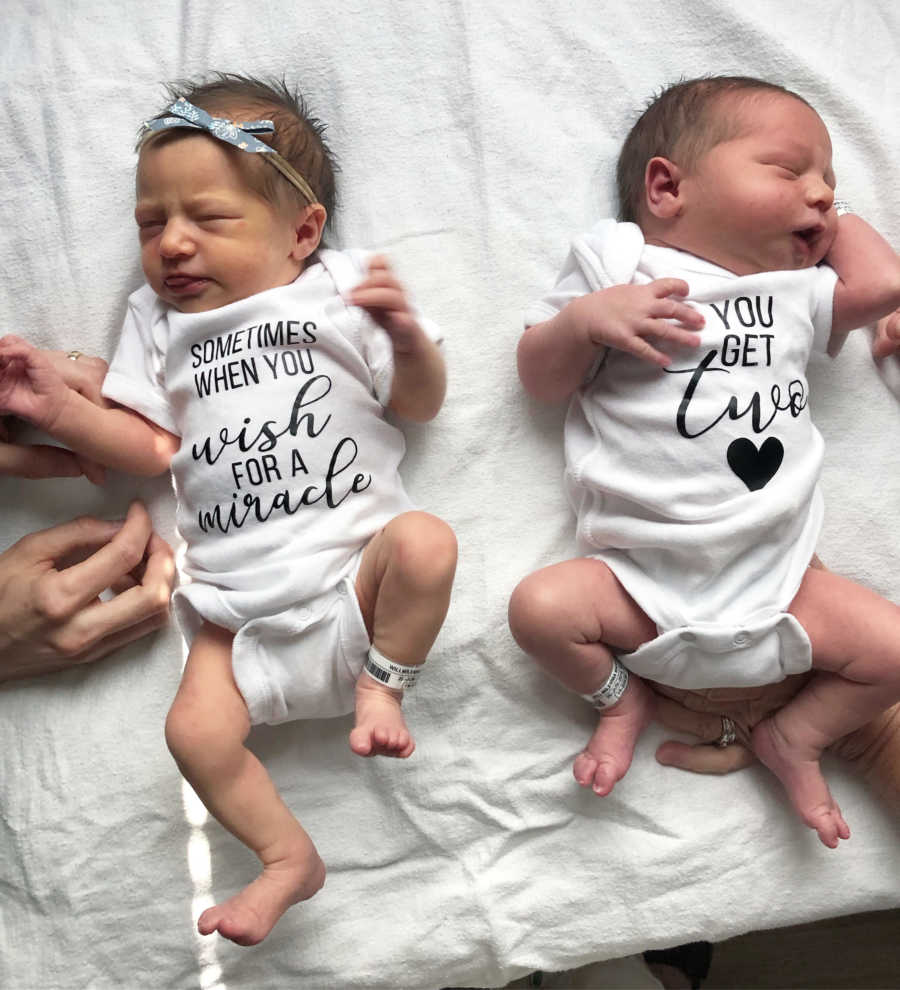
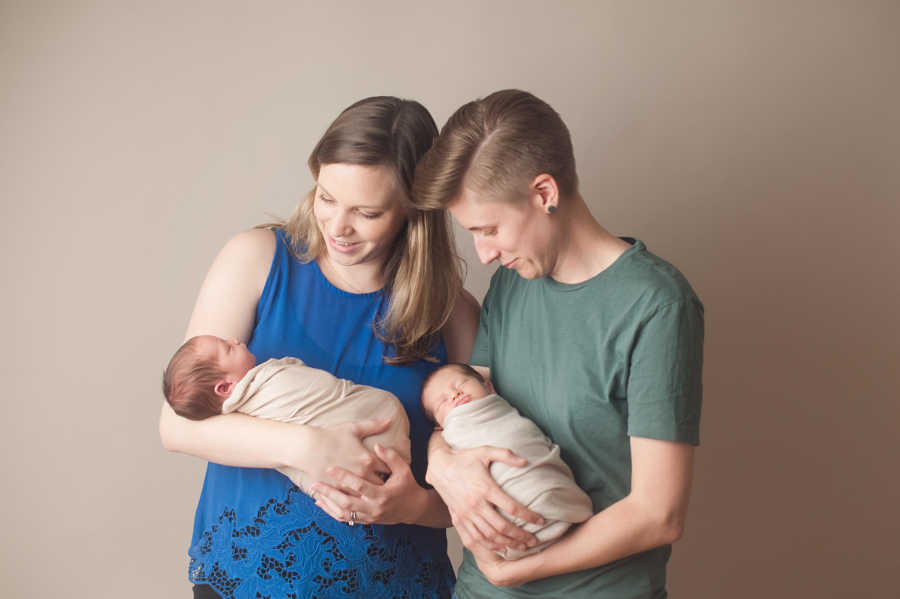
We were fortunate our babies were little fighters and didn’t require any time in the NICU, so we were discharged from the hospital as a family of four just three days after they were born. Even though I was begging our medical team to allow us to go home, I was terrified, and if I’m being honest, I had an overwhelming feeling of wanting to run away. Once we were home, the anxiety, sadness, and disinterest I was feeling only got worse. Our midwives would come every couple of days to check in on the babies and me, and during some of her visits, our midwife would casually remind us of the signs of PPMD. After those appointments, Maeghan would check in on me the way she did during our pre-birth preparations. She would tell me she was concerned and ask if I thought I should reach out for some help. I knew I was struggling, but I was determined to fight through whatever I was battling on my own.

Weeks passed and we were discharged from the care of our midwives, and there was one final reminder from her about the signs of PPMD and where to go for help. I nodded to signal I understood as the tears fell uncontrollably – something that was happening more often than not. I was struggling, I knew I was. I was angry, paranoid, overwhelmed, deeply sad, and disinterested in everything, but I still was so hesitant to admit I needed help. It wasn’t until the twins’ two-month well-check with our family physician when I finally accepted help. Our physician said three words, ‘How are you?’ As I bounced our colicky daughter up and down in my arms, I immediately fell apart. For the first time in two months I answered that question honestly – I told her I was not okay and I needed help.
I began attending a weekly postpartum support group with other moms going through the same things I was. I started seeing a therapist one-on-one, and eventually, when things weren’t improving as much as I knew they should, I began taking medication. I’m familiar with mental health – I’ve struggled before, I’ve been to therapy before, I’ve taken medication before, and I speak openly about my previous struggles – and I’m not ashamed of it. However, this time it all felt different. Being a mother, there is so much pressure to be ‘perfect’ and to have it all together. So how was I to feel when everything was unraveling, and I was so far from perfect? I felt so much shame and guilt about what I was going through, and until I began to open up in my support group, I felt like I needed to hide my true experience of motherhood from the world.
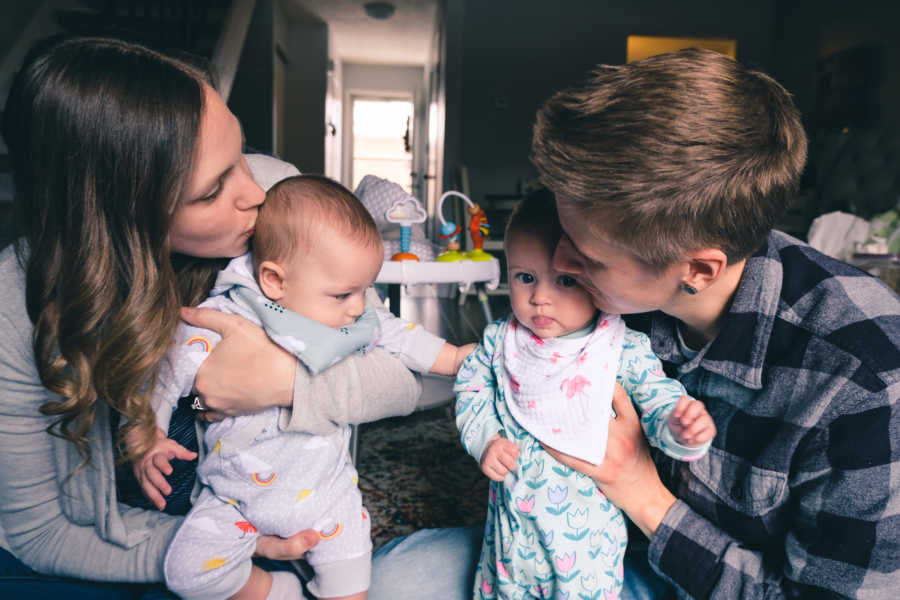
My twins are now 15 months old, and I’m writing this the evening before I return to work after my 16-month maternity leave. I’m still on medication, and if it weren’t for COVID, I’m sure I’d still be attending my weekly support group, but thanks to the support I received in those early days, I am in a much better place. I’m on the other side, and let me tell you, it’s beautiful here, and so worth hanging on for.”
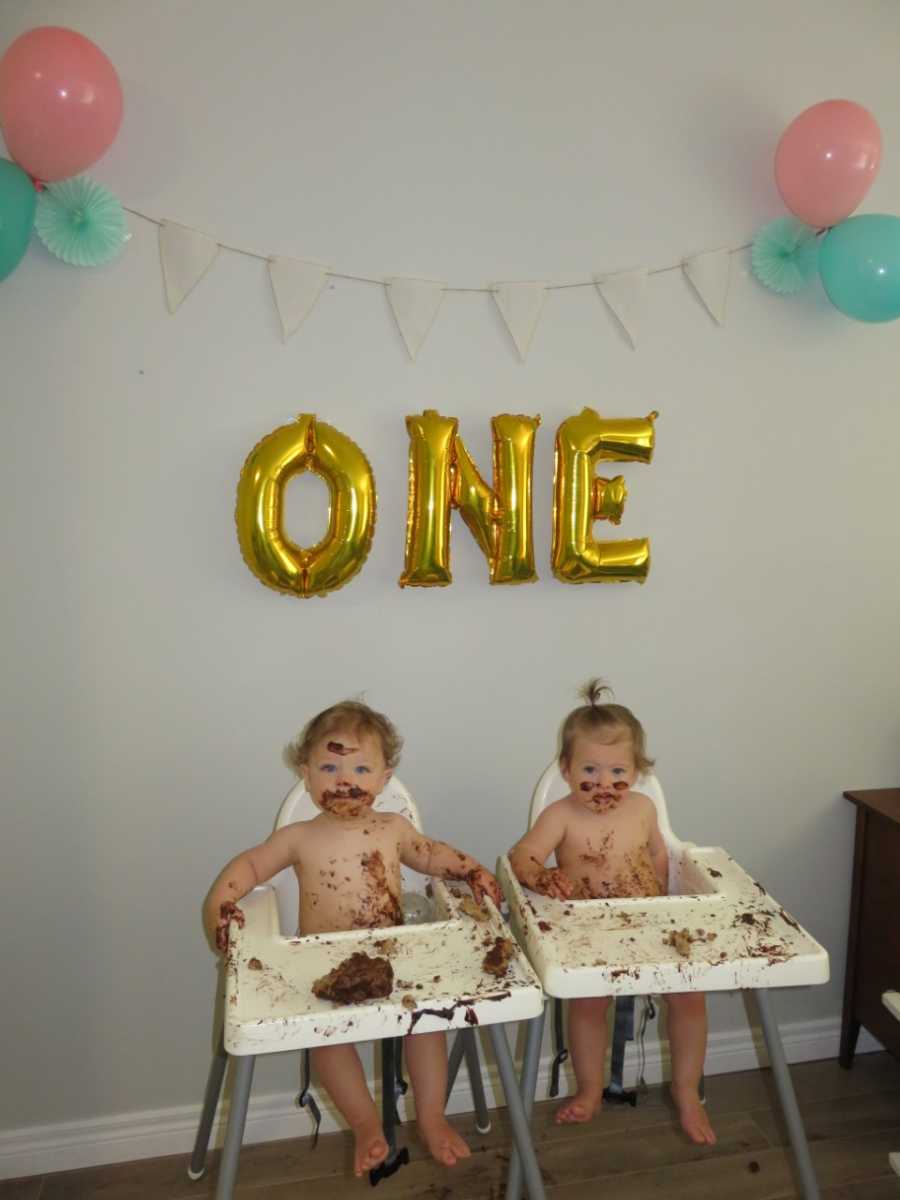
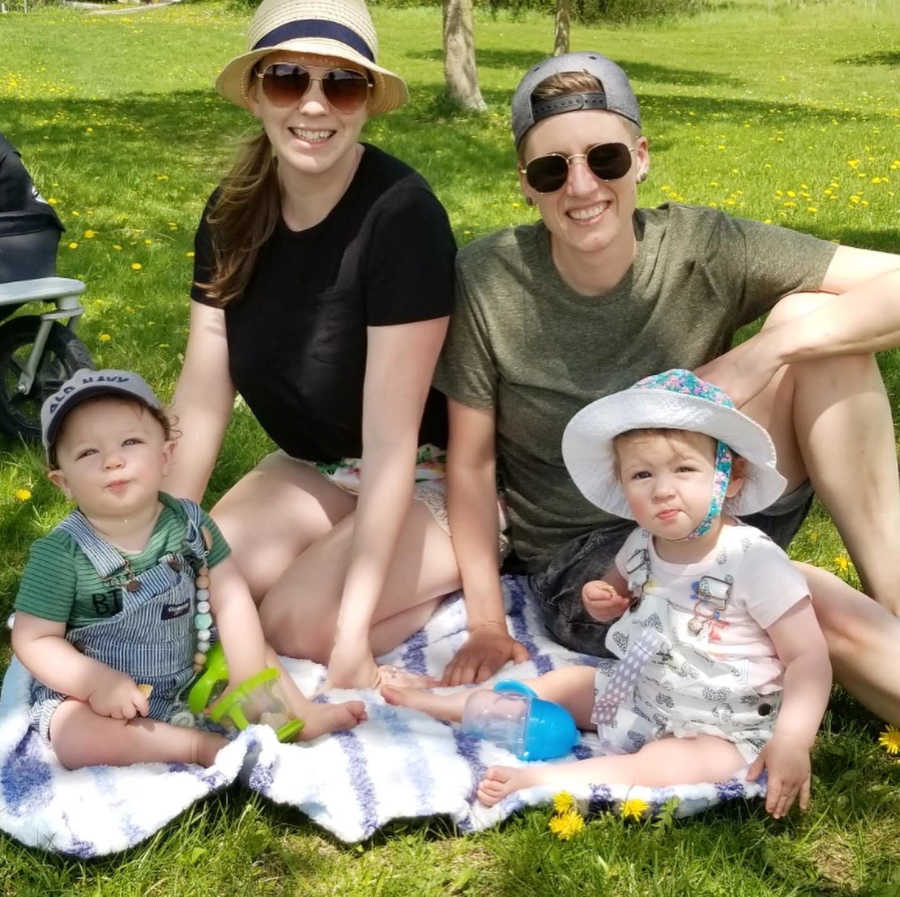
This story was written by Emma Willms of Ontario, Canada. You can follow her journey on Instagram. Submit your own story here and be sure to subscribe to our free email newsletter for our best stories, and YouTube for our best videos.
Read more stories like this:
Do you know someone who could benefit from this story? SHARE this story on Facebook to let others know a community of support is available.



